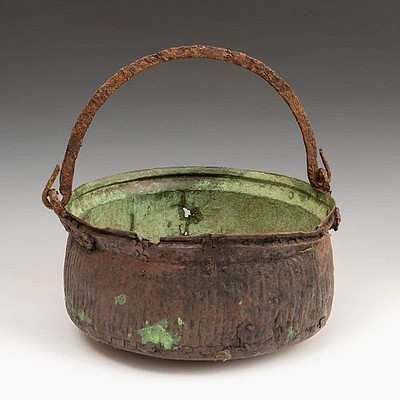Roman amphora, 2nd century AD. Terracotta. With iron support. Measures: 108 x 26 cm (diameter).
Lot 39
About Seller
Setdart Auction House
Carrer Aragó 346
Barcelona
Spain
Setdart Subastas was born in 2004 and is currently the first online art auction in Spain with solidity, prestige and reliability guaranteed by our more than 60,000 users. Setdart has a young, dynamic and enterprising team ready to successfully manage the purchase and sale of art works through custom...Read more
Categories
Estimate:
EUR€1,500 - EUR€1,600
$1,595.74 - $1,702.13
Absentee vs Live bid
Two ways to bid:
- Leave a max absentee bid and the platform will bid on your behalf up to your maximum bid during the live auction.
- Bid live during the auction and your bids will be submitted real-time to the auctioneer.
Bid Increments
| Price | Bid Increment |
|---|---|
| EUR€0 | EUR€10 |
| EUR€200 | EUR€25 |
| EUR€500 | EUR€50 |
| EUR€1,000 | EUR€100 |
| EUR€3,000 | EUR€200 |
| EUR€5,000 | EUR€500 |
| EUR€10,000 | EUR€1,000 |
| EUR€20,000 | EUR€2,000 |
| EUR€50,000 | EUR€5,000 |
About Auction
By Setdart Auction House
Dec 22, 2021
Set Reminder
2021-12-22 08:30:00
2021-12-22 08:30:00
America/New_York
Bidsquare
Bidsquare : Archaeology, Session I
https://www.bidsquare.com/auctions/setdart-auction-house/archaeology-session-i-8050
Setdart Auction House sofia@setdart.com
Setdart Auction House sofia@setdart.com
- Lot Description
Roman amphora, 2nd century AD. Terracotta. With iron support. Measures: 108 x 26 cm (diameter). The amphora is a type originating from Greek pottery, widely used in the Roman Empire, characterized by being a tall fusiform-shaped vessel, with a narrow neck and two openwork handles on the sides of it, usually ending in a point to place it sunk in the sandy soil or on an upright. It was used by the ancient Greeks and Romans as the main means of transporting and storing grapes, olives, olive oil, cereals, fish, wine and other commodities. However, during the Roman period it was also frequently used for funerary purposes, as a container for the ashes of the deceased. The average volume of an amphora was about 25-30 liters (one cubic foot); its weight and content, in an amphora filled with water, gave rise to the talent, as a measure of weight and also a monetary unit. The first Greek types had a continuous curved profile, while the more modern and Roman examples have a clearly differentiated upper part (neck and mouth) from the rest of the body. Some of these pieces, such as the famous Panathenaic Amphorae, had pictorial decorations, especially those of Greek origin. However, during the Roman Empire, due to the expansion of trade, their use was focused on the transport and storage of food, so they were usually simple, with no decoration other than modeling.
- Shipping Info
-
In-house shipping available. Please inquire at admin@setdart.com.
-
- Buyer's Premium



 EUR
EUR CAD
CAD AUD
AUD GBP
GBP MXN
MXN HKD
HKD CNY
CNY MYR
MYR SEK
SEK SGD
SGD CHF
CHF THB
THB














